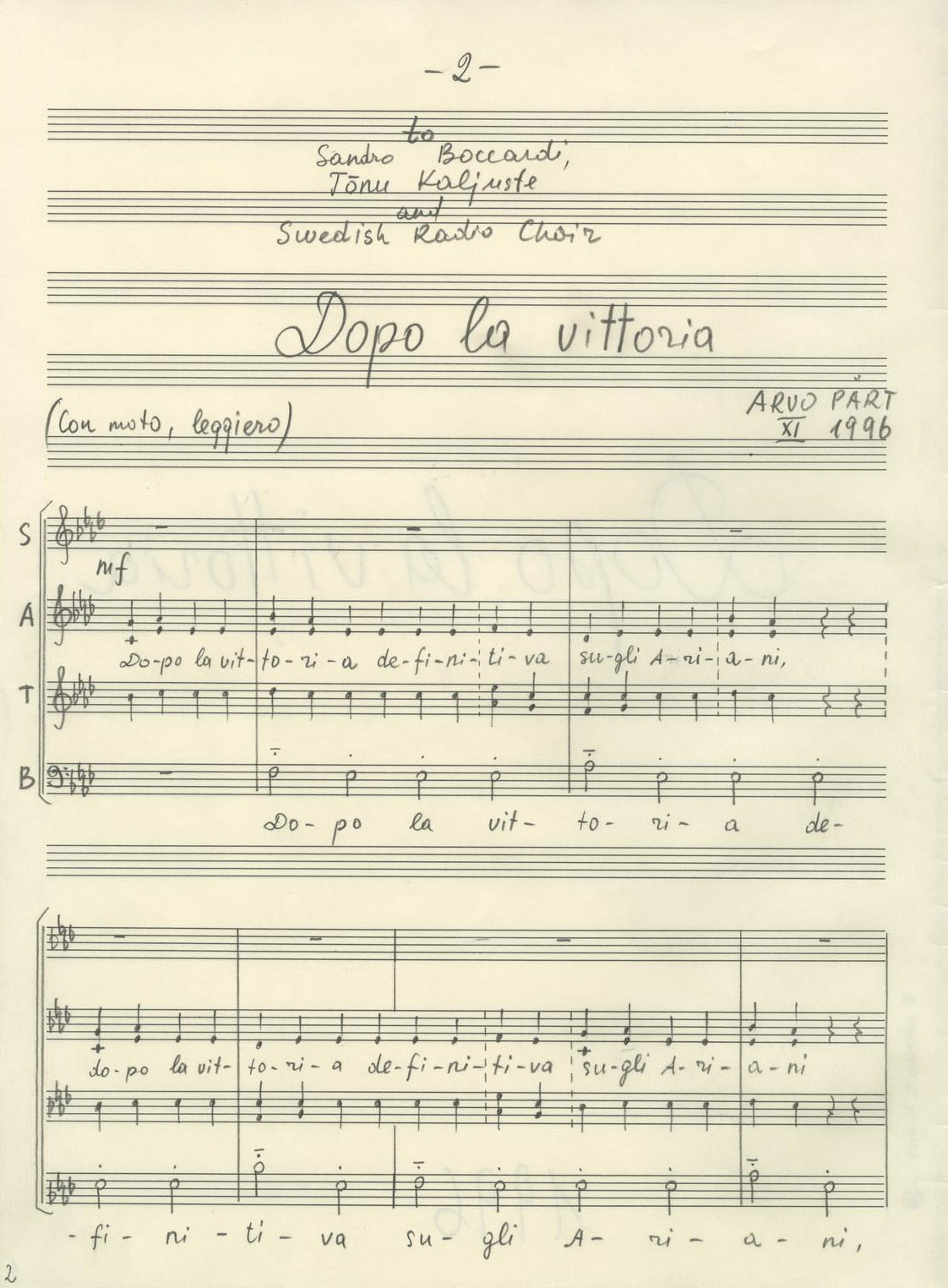Scored for
Duration
12 min
Short description
Dopo la vittoria – piccola cantata or “the little cantata” – was composed for mixed choir a capella in 1996 and revised in 1998. The piece was commissioned by Sandro Boccardi on behalf of the City of Milan to celebrate 1,600 years since the death of St. Ambrose, Archbishop and patron saint of Milan in 1997.
The text for Dopo la vittoria is a description of the scene that inspired the creation of Te Deum: St. Augustine’s baptism by St. Ambrose, while jointly singing an ode to God. The text originates from the encyclopaedia The History of Church Singers and Songs (Исторический обзор песнопевцев и песнопения греческой церкви) compiled by Archbishop Filaret and published in 1902 in St. Petersburg. Keeping in mind the commission…
World premiere
Composer's recital: Arvo Pärt. Sette pezzi sacri
Tõnu Kaljuste (conductor), Swedish Radio Choir
Completion year
Revision year
Dedication
Commissioned by
Scored for
Duration
Publishers
Language
Vocal text
Dopo la vittoria definitiva sugli Ariani, Sant’ Ambrogio compose un inno solenne di ringraziamento:
“Te Deum laudamus”;
da allora questo canto viene ripetuto in occasione di cerimonie solenni di ringraziamento.
Trascorsi due anni, quando davanti al consesso dei potenti di Milano venne battezzato Agostino, quelle strofe di ringraziamento furono cantate dagli officianti e dai battezzati e quindi entrarono a far parte da quel momento del cerimoniale religioso.
L’antico e ignoto biografo di Agostino scrive:
“Sant’ Ambrogio allora con voce lieta lodò la Santissima Trinità e indusse lo stesso Agostino a proclamare la sua fede nella gloria di Dio.”
Lodando e ringraziando il Signore Sant’ Ambrogio diceva:
“Lodiamo Te, o Signore, in Te crediamo, o Signore.”
Agostino proseguiva:
“A Te, Padre Eterno, tutta la terr…
